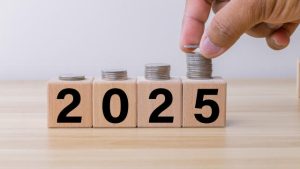So What Happens To Your Money When You Reach Retirement
Retirement can be pretty fickle these days. Between rising and falling 401(k) accounts and an…
Retirement can be pretty fickle these days. Between rising and falling 401(k) accounts and an uncertain economy, there’s a lot of talk about how to shift gears when you’re furiously trying to save for retirement. However, what about when you actually reach the golden gates of retirement? Are they really golden or is that gold just a spray on thing? Just about every financial outlet has weighed in on how to make your retirement truly golden and not just that type of fake gold that turns green in the shower. There’s no reason to feel like you can’t have a great retirement, but there are things that you have to think about — like, uh, how to actually move around during the retirement phase.
There’s good news and bad news — the good news is that a lot of your money will stay in your retirement account, happily collecting interest and growing along with you as you age. However, the bad news is that you can’t just keep your money in the account forever and not touch it. You will eventually have to withdraw it. The IRS has graciously allowed you to keep the money in the retirement account for decades because they know there’s really only a matter of time before you will have to pull the money out of the account and spend it — paying taxes in the process. The government really wants to make sure that they get those taxes, so they have regulations about your retirement. When you reach 70 1/2, you will have to start making what is referred to as required minimum distributions. As the name implies, this is where you will actually need to start taking money out of your account.
The first thing to figure out is your required beginning date — RBD for short. Generally speaking, your RBD is usually April 1st of the year after you turn 70 1/2. From there, it’s all about calculating your RMD — the number that will determine how much money has to run out of your account.
You will need to look up the life expectancy tables from the IRS — Table III is what will be used to figure out your RMD. Keep in mind that it varies from year to year, so you will need to figure it out every year. Of course, your retirement account’s custodian will usually give you this figure, but it never hurts anything to check it out for yourself.
Your RMD is based on the fair market value for your entire retirement account. Keep in mind that this is the minimum that you will be expected to pull from your retirement accounts every year — 9if that number seems low to you, then you can definitely withdraw more. However, you will have to realize that it will equal less earning power in your account, which can be sort of hard to swallow. Proper budgeting is definitely key to making sure that you take the amount that you need for your life without having to destroy the nest egg that you’ve worked so hard to protect.
Overall, it can be hard to figure out what you need to do when it comes to retirement, but you don’t have to go it alone. Even though we’re big fans of DIY, you can take the information that you learn online and go to your financial advisor in order to develop a plan that actually works well for your unique situation.





